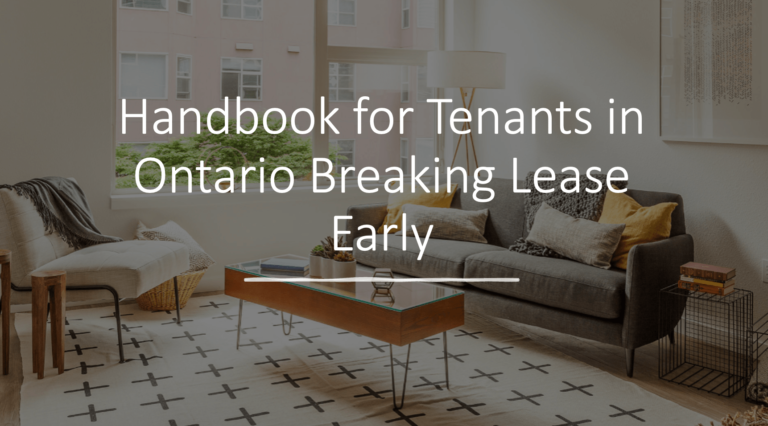Understanding Loss to Lease: A Guide for Property Managers
When it comes to property management, every dollar counts. That is why understanding lease loss is critical in real estate management. The gap between a unit’s market rental rate and the actual rent under the lease is the loss to lease. It is an on-paper loss that shows the amount of money lost by the property owner by not charging market rentals for the unit. Reducing the loss to lease gap can swiftly create value and result in a victory for an investment.
In this article, we will examine loss to lease, how to calculate it, and how it affects real estate management. We’ll also discuss tactics for dealing with lease loss and offer advice on rising rents. So, let’s get started and investigate this critical part of property administration.
Understanding Loss to Lease
Loss to lease is frequently used in real estate management, but what does it mean? Simply, loss to lease refers to the difference between a unit’s market rental rate and the lease’s real rent. This is an on-paper loss that shows the amount of money lost by the property owner by not charging market rentals for the unit.
But why is lease loss so important? From an investor’s perspective, a loss to lease on the operating statement can be a dead giveaway that there is a potential to raise rents. Loss to lease is typically caused by market rents rising faster than real rents, indicating a strong market and inefficient management.
Reducing the loss to-lease gap can swiftly create value and result in a victory for an investment. Cash flow is used to appraise commercial multifamily properties, and the ability to raise rents can have a substantial impact on the property’s value.
It’s worth mentioning that when market rent is lower than real in-place rent, this is referred to as a lease gain. While less common, it is important to comprehend in real estate management. Understanding loss to lease and gain to lease is ultimately critical for investors and property owners wanting to maximize their returns.
Calculating Loss to Lease

Loss to Lease formula
The calculation of loss to lease is straightforward. It is the difference between the actual rent and the unit’s market rental value. Subtract the actual rent from the market rental value of the unit to compute the lease loss. This formula estimates how much money you lose each month by not charging market rents on a unit.
For example, if a unit’s market rent is $1,500 per month and the actual rent is $1,300 per month, the lease loss is $200.
Steps to calculate Loss to Lease
Do the following computation and then multiply the loss to lease by the number of rentable units to compute the loss to lease for a complex with multiple units. If the individual rental amounts for each unit differ, it is best to average them to calculate the loss to lease for each unit. Estimating the loss to lease might help you find potential value-add possibilities. Reducing the rent gap between actual and market rents might result in greater cash flow, ultimately increasing the value of your investment.
Examples of Loss to Lease
Real-world examples of Loss to Lease
Let’s look at a real-world scenario to understand better how loss to lease works. Consider a landlord who owns a two-unit duplex in an excellent location. The market rental value for each unit is $1,500 per month, yet the landlord charges only $1,200 per month. In this example, the monthly loss to lease for each apartment would be $300, for a total monthly loss to the lease of $600 for the entire property.
This means the landlord is losing out on $600 in monthly income, which can build up to a significant amount over time.
Loss to Lease due to lease incentives
To entice new renters, landlords may give incentives such as one free month’s rent with a six or twelve-month lease deal. While this is an excellent approach to fill vacancies, it can result in a lease loss.
For example, if the monthly rent for an apartment is $1,200 and the landlord offers one month free with a one-year lease, the actual rent collected for that year would be $13,200 rather than $14,400. This means that the lease loss for that unit is $1,200.
It is vital to remember that while leasing incentives might assist in attracting new tenants, they can also result in a loss to lease, so it is critical to assess loss to lease appropriately.
How Loss to Lease Calculation Works

Loss to lease is critical for property owners and investors. Knowing how to calculate the loss to lease will assist you in identifying chances to raise your rental income and improve your property’s overall financial performance.
Estimating loss to lease is a simple operation. It is as simple as deducting a unit’s actual rent from its market rental value.
For example, if a unit’s market rent is $1,000 per month but the actual rent is $900 monthly, the lease loss is $100.
A variety of circumstances might contribute to leasing loss. When a property’s condition falls below the market norm, this is a common reason of lease loss. For example, attracting renters at market rental rates may be more challenging if a home is in bad shape and has yet to be upgraded recently.
Another common reason for lease loss is when market rents rise faster than contractual rents. This is frequently indicative of a strong market and/or ineffective management. In such circumstances, landlords can close the gap by raising rents, and lowering their lease loss.
Property owners and investors can make more educated decisions about optimizing rental income and enhancing their properties’ financial performance by understanding how loss to lease is calculated and the factors that influence it.
Raising Rents to Combat Loss to Lease
Strategies to Address Loss to Lease
Bridging the loss-to-lease gap necessitates a diverse approach that involves upgrading the property’s physical condition and charging market rentals. Renovations may include renovating the landscaping, repainting the building, and repairing damaged or outdated amenities. These improvements may entice higher-paying tenants to pay extra for a well-kept property. Furthermore, by charging market rents, landlords ensure they are not losing money and making as much cash as possible.
Offering rent cuts that appeal to tenants is one technique for addressing lease loss. Landlords, for example, may provide one month of free rent for each year of the lease term, which can assist in attracting new tenants and lower vacancy rates. Another method is to provide lease renewal incentives that encourage renters to stay longer, such as discounted rent for renewing a lease early or offering to pay for tenants’ moving expenses if they extend their lease.
Tips for Raising Rents
Rent increases may be difficult, and landlords must weigh the desire to earn more cash against the danger of losing renters. One suggestion is to increase rents rather than all at once progressively. Landlords can avoid sticker shock for tenants and reduce the danger of losing them to competition.
Another suggestion is offering value-added services to justify the rent increase. Landlords, for example, may provide better amenities, such as a fitness or business centre, to justify a higher rent. Instead, landlords may provide services tenants may not access elsewhere, such as free cleaning or laundry.
It is also critical to be open and honest with tenants about the reasons for the rent increase. Landlords can create confidence with their renters and reduce the likelihood of disputes by disclosing the reasons for the rise. Finally, landlords should be informed of market changes and alter rents accordingly. Landlords may ensure they charge competitive rates and attract suitable renters by keeping rents following the local market.
Conclusion
In summary, loss to lease is the difference between a unit’s market rental rate and the lease’s real rent. It is a significant metric for property managers and investors since it can show potential for rent hikes and indicate the strength of the rental market. The loss-to-lease calculation is clear and simple, and it can be used to identify units that are underperforming compared to market rentals. Property owners can add value to their homes and enhance their cash flow by reducing the gap between market and actual rents. Recognizing and mitigating lease loss is thus an important part of successful real estate management.






